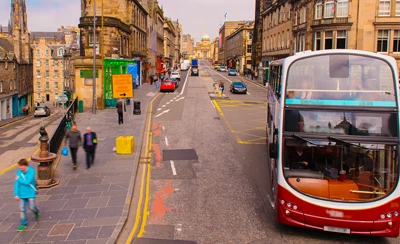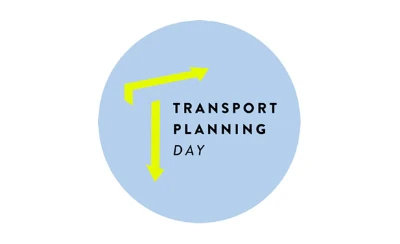TPS-AECOM Roundtable on ED&I and Social Value in Transport Planning
Introduction
As part of the Transport Planning Society’s Transport Planning Day 2021 Campaign, platinum sponsor AECOM hosted a roundtable about ED&I and social value in transport planning. Bringing together transport planners and ED&I specialists from major consultancies and government bodies, participants discussed important areas relating to ED&I and social value within transport planning, and set a path forward for the industry.
Social value and pandemic recovery
Covid-19 has profoundly impacted our society and communities. Transport use, while rising again, is considerably below pre-pandemic levels. The panel concurred that the pandemic has amplified the need to place social value at the heart of planning, ensuring there is a people-centred approach to pandemic recovery.
Panellists agreed that this would require a deep understanding of the views and needs of local communities. This involves identifying what ‘recovery’ means for individual communities – there is no ‘one size fits all’ approach, and it is unlikely to mean striving to return to how things were before. They discussed how transport needs have changed compared to before the pandemic for a range of reasons, for instance due to altered working patterns. They also recognised that transport use will change based on individuals’ perception of risk, citing those who may no longer feel confident travelling or being in public space.
But participants also highlighted the need for pandemic recovery to challenge inequalities that existed prior to Covid-19 – down lines such as race, gender, disability or income – that defined who was worst hit by the pandemic. Those who suffered most from the pandemic, be it due to health, family or financial impacts, were more likely to be those structurally disadvantaged. Indeed, while changing working patterns has received a lot of attention, this will also not cut evenly across society. Planning for recovery through social value, the panel concluded, means understanding how the impacts of the pandemic followed pre-existing inequalities; it is important to ensure the diverse needs of communities are properly understood.
Participants proposed tangible methods to approach this challenge. Firstly, community engagement was suggested as a vital component. This means organisations engaging communities early on, and being brave enough to do so when ideas are not yet fully formed to allow for meaningful engagement and the proper shaping of plans. This may require significant internal advocacy to overcome the reticence that sometimes arises about sharing information early on, but is vital to engaging people from backgrounds traditionally marginalised from decision-making processes. Secondly, participants emphasised the need for a holistic view that integrates transport planning with other aspects urban design, connecting people to place-based community resilience initiatives while focusing on creating liveable neighbourhoods. This involves organisations articulating their social purpose and plans to support that particular area. Finally, the panel advocated for methods of evaluation that stretched beyond relying solely on traditional benefit-cost ratio outcomes and analyses. Instead, they suggested the need to capture a wider set of outcomes, weighted in favour of social and environmental benefits to justify investment in areas that will have the most social value.
Challenging data bias
Data is essential to transport modelling and thus transport planning. But all data contain bias, and transport planners are often working with datasets that have significant holes. Using a dataset without an appreciation of its bias can be particularly harmful to planning practices, despite any best intentions. Panellists raised the example of commuting datasets that do not account for journeys that take a detour via a third destination, for example a school. Not accounting for non-linear movements in this way tends to distort planning decisions in favour of men.
There was a consensus among the panel for the need for greater diversity in the room where planning decisions are made. It was pointed out that the highest rate of users of public transport are from backgrounds least likely to be represented ‘in the room’ as transport planners or policy makers. The panel reflected on how alternative routes into the industry, for instance through apprenticeships, can encourage more diverse intakes. Having people of different backgrounds interpret data will enable planners to more easily recognise biases inherent in datasets and look for ways to patch up those holes.
Panellists recognised the challenges this presents and how diversity must be complemented by inclusive workplace cultures to make this a reality. Diverse perspectives can create uncomfortable conversations, so it is vital that company cultures function to ensure people from underrepresented backgrounds have the confidence to challenge existing practices without fear of judgement.
As well as employing and empowering people from underrepresented backgrounds, panellists contended that there is more to be done on industry education around bias. Planners should strive to be aware of their own instinctive biases in the collection and interpretation of data and seek to minimise its influence. Participants suggested that industry training qualifications and codes of conduct could do more to make professionals aware of this issue and seek to combat it. This will move the industry away from the mindset it has fallen into that there is a specific way to do things and the view that unless an established path is followed things will not be approved or achieved. It is vital to recognise that unequal design is part of the status quo.
Panellists were also in agreement that public engagement and consultation can be used to challenge and correct bias in decision-making processes. Diverse means of consultation are vital and people should be empowered to challenge assumptions and proposed ideas; early engagement is vital to yielding the maximum benefit from this.
Promoting social inclusion and social mobility
Participants pointed out that transport planning has an important to role to play in both social inclusion and social mobility, but it is only part of the picture. Fulfilling the role transport planning can play in social inclusion and mobility requires an understanding of how it connects to wider social phenomena while ensuring people, as well as places, feed into planning decisions.
Participants suggested there are two fundamental perspectives we need to adopt to enhance social mobility and social inclusion. Firstly, transport planning has a significant role to place in unlocking new places of opportunity to expand individuals’ horizons. Better transport connections can connect people to opportunities that can enable social mobility, such as jobs and education. Secondly, participants noted, there is also a need to target specific areas where there are social exclusion issues, and consider how you overcome those barriers to inclusion. This reflects an approach to transport planning that stretches beyond connecting place A with place B, but instead focuses on prioritising certain areas based on the people there. This requires a user-focused understanding of accessibility and how connectivity can be converted to use in the context of wider social phenomena, such as our aging population. It also involves a consideration of physical barriers, but also, for instance, digital barriers about levels of access to information and technology.
There was consensus that user-focused design to maximise accessibility can only be achieved through engagement. This means hearing the voices of local communities, considering every type of user that will use the transport system or road network, to design in accessibility and inclusivity from the start. There is a need to avoid affording dominant users of transport, or the economically most productive, the sole voice to shape the network. Such exclusions can compromise social inclusion and prohibit social mobility.
The panel reflected on tools like Equality Impact Assessments as an evidence-based approach to ensure planning decisions do not disadvantage any particular groups. Having this approach in place can steer you towards looking for further engagement or data to ensure decisions are based on intelligence. Participants returned to the importance of having project evaluation methods based on social outcomes, and also considered how organisations can work collaboratively to share best practice and lessons learned around initiatives and processes that have and have not worked well. Finally, participants reflected on the need to constantly search for ways to measure transport planning’s impact on social inclusion and mobility, despite the difficulties of dealing with hard to measure factors and apparent intangibles.
Conclusion: Action areas
The roundtable conversation threw up a range of ED&I and social value challenges in transport planning. Participants concurred that action coming out of the roundtable should target areas where gaps exist in the industry’s current approach to supporting ED&I and social value.
The following action areas were considered the most pressing:
- Codes of conduct. ED&I must be a foremost concern of transport planners day-to-day. TPS will look into updating its code of conduct to contain explicit reference to ED&I. Individual organisations should also review their respective codes of conduct.
- Data bias. Data bias is pervasive but difficult to detect. The focus should be on raising awareness of bias in data and developing ways to improve the accuracy of data collection and analysis to reflect the diversity of travel choices and users. The industry should consider how to approach a holistic review of the way we collect and use data and sharing best practice. TPS will look into updating its skills and knowledge development schemes to reflect the importance of identifying and reducing bias.
- Public engagement. The importance of community engagement was a thread that ran throughout the roundtable. The industry should consider how it can set-out best practice in conducting community engagement and equality impact assessments, ensuring these processes meaningfully inform decision-making.
- Apprenticeships. The industry should support apprenticeship schemes that provide new routes into the industry for people from a range of backgrounds. There is an opportunity for research to be undertaken exploring the impact that apprenticeships (including TPS’s Technician and Degree Apprenticeships) can have on improving diversity in the transport planning workplace. Participants noted the importance of ongoing collaboration underpinning all action areas, stretching to all parts of the transport industry including operators and delivery partners. This does not mean organisations shirking responsibility, as pioneers are still required to drive the industry forwards, but it is a recognition that meaningfully improving ED&I and maximising social value demands collective action.







